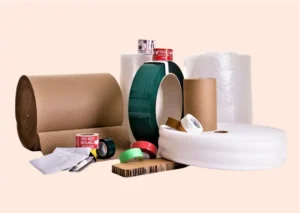Table of Contents
Key Takeaways
-
Start preparing for your move at least six weeks in advance.
-
Gather all necessary packing supplies early to avoid last-minute rushes.
-
Label your boxes clearly and create an inventory to track your belongings.
-
Keep essential items in a separate, easily accessible bag for the first night.
-
If overwhelmed, don’t hesitate to reach out for professional moving assistance.
Ready, Set, Move: Your Checklist Awaits
Moving can be a mix of excitement and stress, but with a solid plan, you can tilt the balance towards a smooth and hassle-free experience. Whether you’re moving across town or to a different state, a comprehensive moving day checklist is your roadmap to a successful relocation. Let’s break down the dos and don’ts to ensure nothing is left behind—except your worries.
The Dos and Don’ts of Moving Day
|
Do |
Don’t |
|---|---|
|
Wake up early to give yourself enough time before the movers arrive. |
Schedule anything for the day of the move, including work or promising first dates. |
|
Pack any last-minute items, such as bathroom items and kitchen perishables. |
Leave your moving company a review immediately after the move. |
|
Do a final sweep of your home before the movers arrive. |
Forget to eat through your home and dispose of perishables before the move. |
|
Greet your movers and give them a walkthrough of your house or apartment. |
Schedule your move too close to the holidays or weekends, as it may be more difficult to find movers. |
|
Moderate the move by staying in touch with the movers and being present during the process. |
Assume your movers will know where to place everything without clear instructions. |
|
Guide the movers at your new home and show them where each box should go. |
Forget to have water and snacks available for your movers. |
|
Tip your movers after they have finished their work. |
Leave your moving company a review immediately after the move, as they may not have completed all tasks to your satisfaction. |
|
Unpack only the essentials on the first night and the next day. |
Forget to check the weather and adjust your moving plans if needed. |
|
Put up curtains to avoid morning light. |
Forget to clean your new place before moving in. |
|
Say thanks to your real estate broker if you have one. |
Forget to notify and transfer utilities to your new home and disconnect them from your old home. |
Pre-Move Essentials
Before anything else, get your ducks in a row. A well-thought-out plan is the bedrock of any successful move. Here’s what you need to tackle first:
-
Confirm your moving date and start a countdown. Having a clear timeline will guide your preparation.
-
Notify your landlord, if you’re renting, and arrange for the return of your deposit.
-
Reach out to utility companies to schedule service terminations and set up in your new home.
-
Declutter your space. Decide what to keep, sell, donate, or throw away.
-
Book moving services well in advance to ensure availability, especially during peak seasons.
Don’t Forget the Details
It’s often the little things that trip us up on moving day. Here are some crucial details you shouldn’t overlook:
-
Change your address with the postal service and update it for subscriptions and bills.
-
Arrange a time to collect the keys to your new property to avoid any access issues on moving day.
-
Prepare a list of emergency contacts in your new area, including the nearest hospital, police station, and a reliable locksmith.
Most importantly, take a deep breath. Moving is a big task, but breaking it down into manageable steps makes it less daunting.

Start Off on the Right Foot
Now that you’ve got the groundwork laid, it’s time to focus on the nuts and bolts of moving. Starting off on the right foot means gathering all the tools and materials you’ll need to pack effectively.
Gather Your Supplies
Having the right packing supplies is crucial for protecting your belongings and staying organized. Here’s what you’ll need:
-
Sturdy boxes in various sizes for different items.
-
Packing tape to secure the boxes and bubble wrap or packing paper for fragile items.
-
Permanent markers for labeling and scissors or a box cutter for easy unpacking.
-
Furniture covers and moving blankets to prevent scratches and dings.
Don’t forget to consider special containers for items like artwork, electronics, and jewelry. These investments can prevent costly damages.
Secure Reliable Help
Whether you’re enlisting friends or hiring professionals, securing help ahead of time will save you from a last-minute scramble. If you’re going the professional route, research and select a reputable moving company. Look for reviews, ask for quotes, and confirm their insurance coverage. If friends and family are assisting, coordinate schedules and communicate clear expectations about the day.
Remember, the goal is to simplify your relocation experience. If at any point you feel overwhelmed, reaching out for professional assistance is a smart move. It can make all the difference in ensuring a smooth transition to your new home.
Last 48 Hours: The Final Push
As the clock ticks down, your focus should be on finalizing your preparations. This is the time to double-check your to-do list and ensure everything is packed except for the essentials you’ll need in the next two days. Confirm transportation arrangements, make sure your moving day toolkit is ready, and have cash on hand for any last-minute expenses.
Moving Out: The Final Sweep
Before you lock the door one last time, do a final walkthrough of your old home. Check all closets, drawers, and shelves to make sure nothing is left behind. Clean as necessary to leave the space in good condition, especially if you’re expecting a security deposit return. If you’re using a moving company, it’s also a good time to reconfirm their arrival time and any last-minute details.
Example: When Sara moved last summer, she almost forgot her favorite necklace in a hidden jewelry drawer. A final sweep of the house saved her from losing a precious heirloom.
Move Day Must-Dos
Today’s the day! Start early and stay on top of your checklist. Have a hearty breakfast, dress comfortably, and ensure your phone is fully charged. Keep your moving day essentials bag with you at all times, and maintain a positive attitude. It’s going to be a busy day, but you’re ready for it.
Early Bird Advantages
Getting an early start gives you a buffer for unexpected issues and helps you avoid the hottest part of the day for physical work. It also means you’ll have more daylight hours to unload and settle into your new home. If you’re driving a long distance, this also provides a safety margin for any travel delays.
Item Inventory Accountability
As your belongings are being loaded onto the truck, check them off your inventory list. This ensures everything is accounted for and provides a record in case something goes missing. If you’re using a moving service, this is also the time to review and sign the bill of lading, confirming the condition of your items pre-move.

First Night in Your New Home
After a long day of moving, you’ll want to make your first night as comfortable as possible. Prioritize unpacking the essentials like bedding, toiletries, and a change of clothes. Set up your bed and make sure you have easy access to any items you’ll need first thing in the morning.
Essentials Unpacked First
Unpack your ‘Open First’ box that contains the necessities for your first night. This box should include things like a coffee maker, some utensils, basic toiletries, and any chargers for your devices. Having these items easily accessible will make your first night and morning in your new home more pleasant.
Security & Safety Checks
Once you’re in your new home, do a quick safety check. Locate the fuse box and the main water valve in case of emergencies. Test smoke detectors, ensure all doors and windows lock properly, and if necessary, change the locks for added security. Safety is paramount, especially in an unfamiliar environment.
Post-Move Protocols
Now that you’ve moved in, there are a few more steps to ensure you’re fully settled. Start by inspecting your belongings for any damage during the move. Report any issues to your moving company immediately. Then, begin the process of updating your address with government agencies, your employer, and other important institutions.
Inspect and Report
Examine your furniture and boxes for any signs of damage. If you find any, take photos and document the issues for your moving company. It’s crucial to report these in a timely manner to ensure any claims are honored.
Finally, take a moment to breathe and congratulate yourself. Moving is a significant undertaking, and you’ve managed it like a pro. Remember, if you need assistance at any point, professional moving services are just a call away. They can provide the support and expertise to make your move even smoother.
Post-Move Protocols
Unpacking is not just about getting things out of boxes, it’s about making sure everything has arrived in one piece and setting up your new space to become a home. Post-move protocols are essential to ensure that your move is truly complete.
Inspect and Report
As you unpack, keep a close eye on the condition of your items. If you spot any damage, report it to the moving company immediately to start the claims process. Remember, time is of the essence when it comes to reporting damages. The quicker you do it, the better your chances are for compensation.
Settling In: Beyond the Boxes
Settling into your new home is more than just unpacking. It’s about creating a comfortable living space for you and your family. Start by arranging your furniture in a way that makes the space feel welcoming and functional. Then, take the time to personalize your home with photos, art, and decor that reflect your style.
Most importantly, introduce yourself to your neighbors and explore your new community. This can help you feel more at home and can also provide you with valuable local knowledge and new friendships.
FAQs
Here are some frequently asked questions to help guide you through your moving process. Remember, being prepared and informed can make all the difference.
How Early Should I Start Packing for a Move?
Start packing at least six weeks before your move date. Begin with items you use infrequently and save daily use items for last. This gives you ample time to sort, pack, and organize without the pressure of a looming deadline.
Starting early also allows you to declutter and decide which items to keep, donate, or discard, reducing the volume of things you need to move.
And remember, if you’re feeling overwhelmed, it’s never too early to reach out for help from friends, family, or professional movers.
-
Week 6-5: Sort and declutter.
-
Week 4-3: Pack non-essential items.
By following this timeline, you’ll reduce stress and ensure that everything is ready when moving day arrives.
What Should I Keep on Hand for Moving Day?
On moving day, keep a personal essentials bag with items like your wallet, phone, keys, chargers, snacks, and water. Also, pack a box with day-one essentials like toilet paper, a shower curtain, basic tools, and cleaning supplies.
How Can I Make Sure Nothing Gets Lost During the Move?
To prevent items from getting lost, create a detailed inventory list of all your belongings before the move. Label each box with its contents and the room it belongs in. As you pack and unpack, check items off your list. This will help you keep track of your possessions and quickly notice if something is missing.
What’s the Best Way to Label Boxes for Moving?
Label each box with a description of its contents and the room it’s destined for. Use different colored markers or stickers for different rooms to make identification easier. Additionally, label boxes containing fragile items with a clear “FRAGILE” warning.
Here’s a quick guide:
-
Use a bold marker for visibility.
-
Include a brief list of contents and the room name.
-
Mark ‘FRAGILE’ on boxes with delicate items.
Is There Anything I Should Not Pack When Moving?
Yes, there are certain items you should not pack when moving. These include hazardous materials, perishable food, and important documents or valuables that should be kept with you at all times. Additionally, consider leaving behind large items that may not fit or suit your new home.



